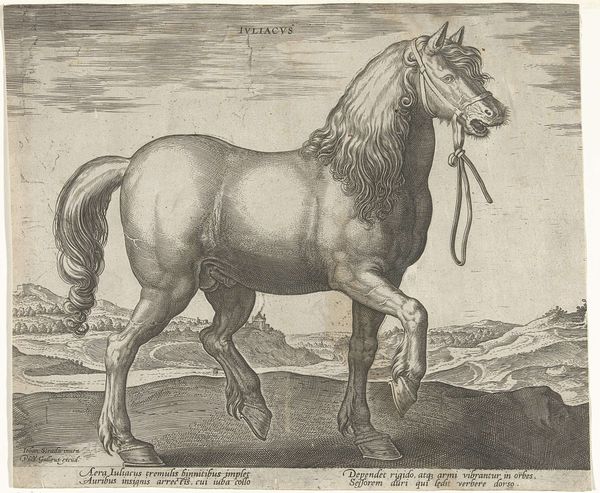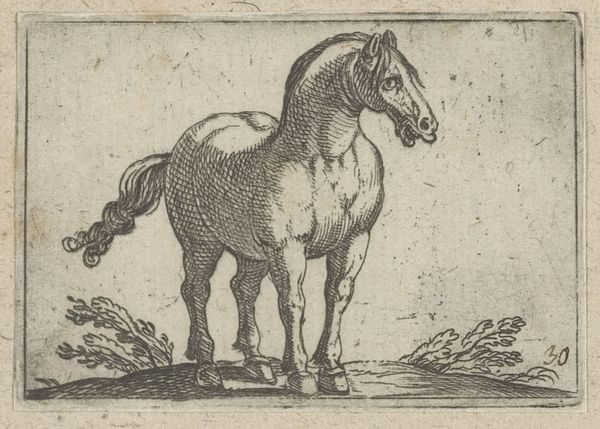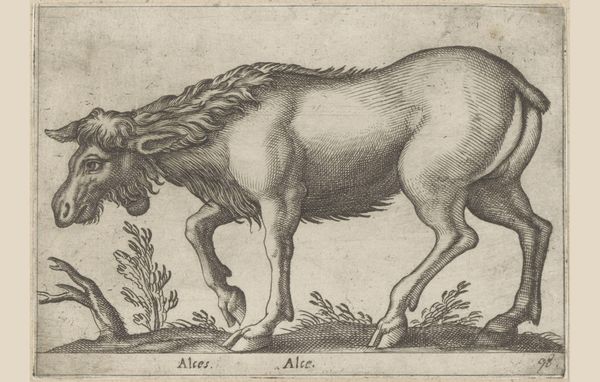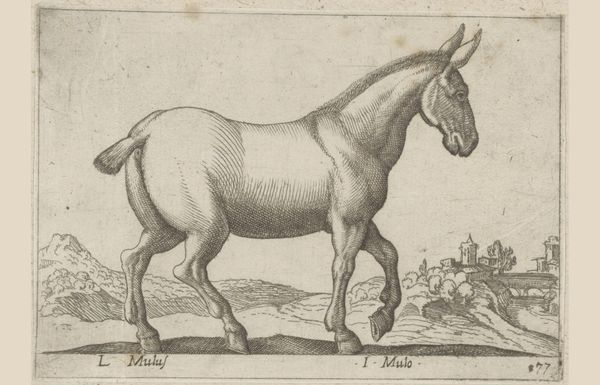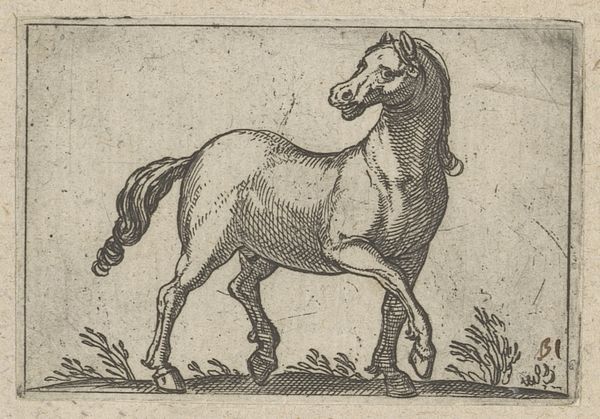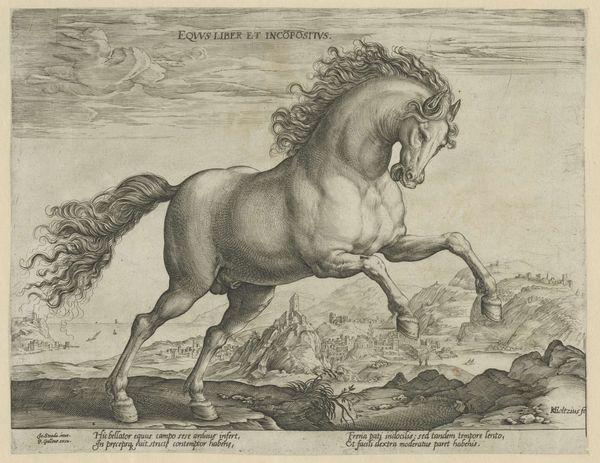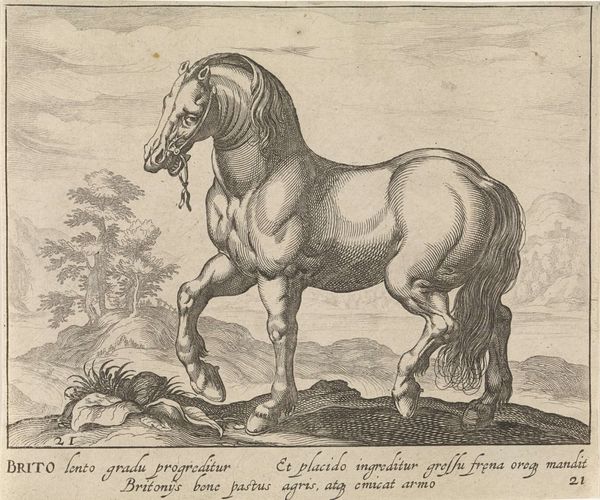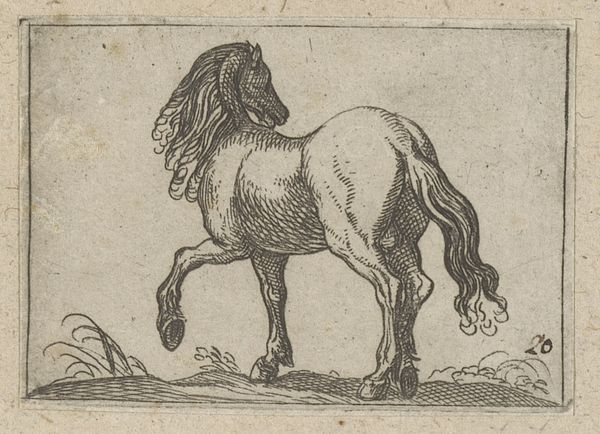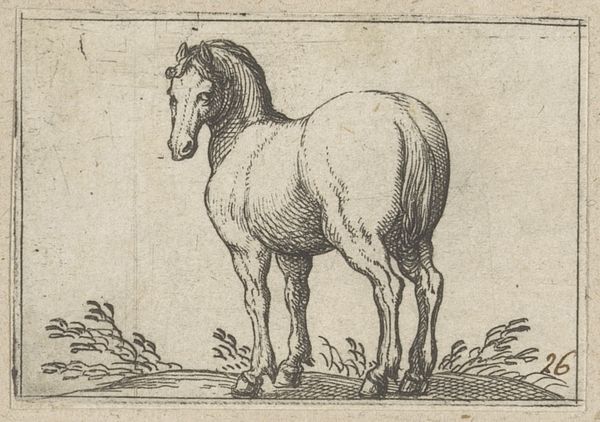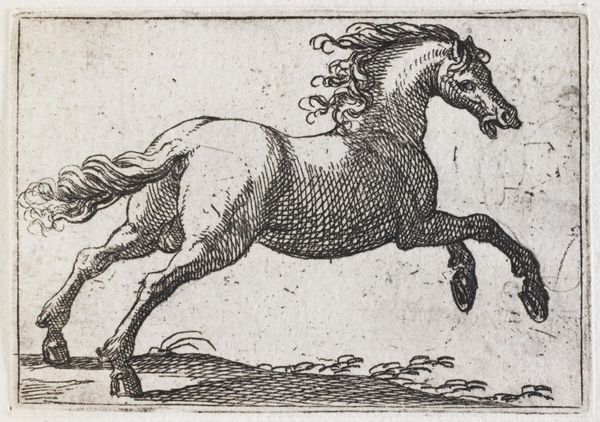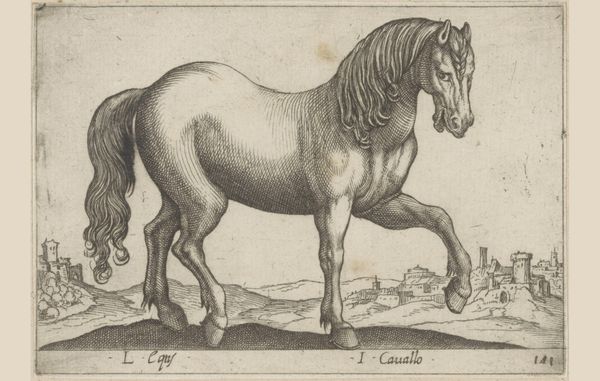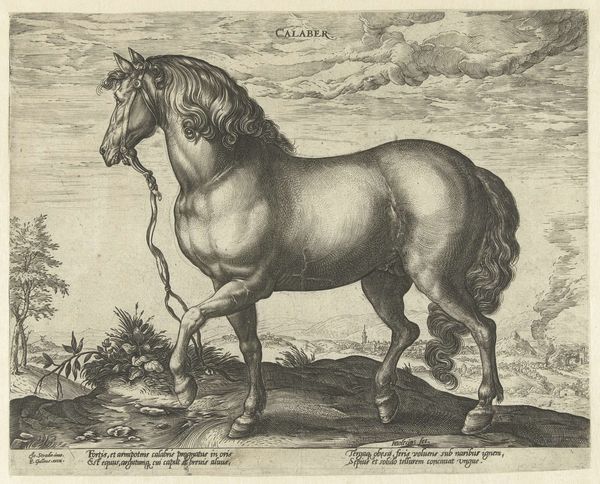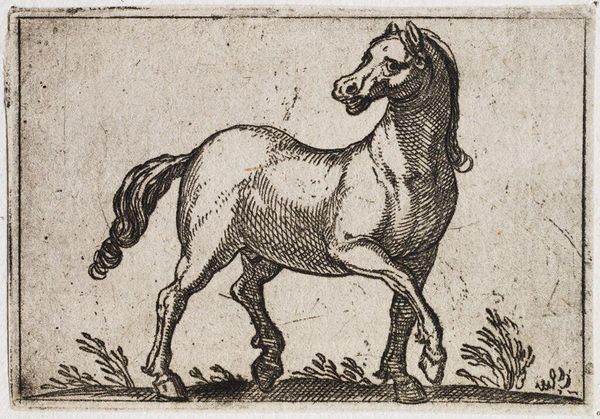
drawing, print, ink, engraving
#
pencil drawn
#
drawing
# print
#
pencil sketch
#
landscape
#
figuration
#
ink
#
pen-ink sketch
#
line
#
sketchbook drawing
#
history-painting
#
northern-renaissance
#
engraving
Dimensions: height 95 mm, width 137 mm
Copyright: Rijks Museum: Open Domain
Antonio Tempesta made this engraving of a unicorn, or ‘eenhoorn’ as it is known in Dutch, sometime between 1575 and 1630. This was a time when printed images circulated widely around Europe, and were often used to document the natural world. But of course, the unicorn isn’t found in nature. It belongs to the realm of myth, legend, and heraldry. The animal symbolizes purity, grace, and power, and it often appears in the coats of arms of royal families. Note the figure of a woman riding a similar creature in the background. What we are seeing is therefore not an attempt at zoological accuracy. Rather, Tempesta’s image presents a fantasy that is deeply embedded in the cultural and political life of its time. As historians, we can look at emblems, literature, and courtly rituals in order to understand better how the unicorn functioned as a symbol in Early Modern Europe. By doing this, we can appreciate how this artwork engages with the social and institutional contexts of its day.
Comments
No comments
Be the first to comment and join the conversation on the ultimate creative platform.
